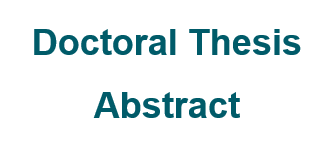Biology, preference and interactions of Orius insidiosus, predator of Frankliniella occidentalis in pepper
DOI:
https://doi.org/10.31285/AGRO.24.1571Palavras-chave:
antibiosis, antixenosis, intragremial predation, amblyseius swirskii, anthochoridsResumo
The biological control program in greenhouse pepper cultivation in Uruguay is based on releases of Orius insidiosus and Amblyseius swirskii for the control of Frankliniella occidentalis and Bemisia tabaci, respectively. Despite the fact that O. insidiosus is reported as efficient thrips predator, in our conditions it can not establish and control this pest. Being zoophytophagous, the host plants of their prey have an effect on their oviposition preference and the performance of offspring. For this reason, the first objective of this study was evaluate the aptitude of pepper fruits as oviposition-feeding substrate, in comparison with bean pods (substrate used for their multiplication). The study of the biological variables of O. insidiosus (duration of development, survival, fertility and longevity) showed that pepper fruits were more appropriate than bean pods, ruling out the effect of antibiosis. As O. tristicolor is present in the region, was incorporated into the study in order to determine if there were differences at the species level and if it was capable of collaborating with O. insidiosus in the control of this pest. As a second objective, was evaluated if there were olfactory stimuli from other host plants that led to a behavior of abandonment of the culture (non-preference or antixenosis). In olfactometry and free choice experiments, comparing two types of pepper (Blocky and Lamuyo), corn and strawberry, it was found that both Orius species had a higher preference for strawberry plants than for pepper plants. This would explain the low establishment on pepper. The third objective was to study the compatibility of A. swirskii and O. insidiosus in the control of thrips, especially, the existence intra-guild predation. Under laboratory conditions it was confirmed that O. insidiosus exerts this phenomenon on A. swirskii, which advises caution if they are released together. It would be convenient to carry out new studies at the greenhouse level and in the spatial ordering of the crops, which allow the consolidation of biological control as a key tool for the sustainable management of pests of the pepper crop.
Downloads

Publicado
Como Citar
Edição
Seção
Licença
Copyright (c) 2020 Agrociencia Uruguay

Este trabalho está licenciado sob uma licença Creative Commons Attribution 4.0 International License.
| Métricas do artigo | |
|---|---|
| Vistas abstratas | |
| Visualizações da cozinha | |
| Visualizações de PDF | |
| Visualizações em HTML | |
| Outras visualizações | |

















